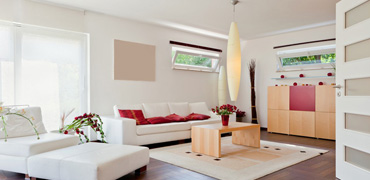Gypsum ceilings are renowned for their smooth finish and versatility in design.
They can be crafted into various shapes and patterns, making them ideal for both contemporary and traditional interiors.
Gypsum ceilings are renowned for their smooth finish and versatility in design.
They can be crafted into various shapes and patterns, making them ideal for both contemporary and traditional interiors.
Transform your space into a work of art with the flawless elegance of gypsum ceilings.
Wooden ceilings add warmth and elegance to any space, creating a natural and sophisticated ambiance.
They can be designed with different types of wood, finishes, and patterns to match the décor of your room.
Elevate your interior with the rich textures and timeless charm of wooden ceilings.
Glass ceilings offer a modern and sleek look, enhancing the sense of space and light.
They allow natural light to flow through and can create a stunning visual effect, especially in areas with architectural features that benefit from transparency.
Illuminate your space with the crystal-clear brilliance and sleek modernity of glass ceilings.
Metal ceilings are known for their durability and contemporary appearance.
They can be designed with various metal finishes, such as aluminum, steel, or copper, and can include patterns and textures for added visual interest.
Make a bold statement with the durable elegance and cutting-edge style of metal ceilings.
PVC (polyvinyl chloride) ceilings are a budget-friendly option that combines durability with ease of maintenance.
They are water-resistant, lightweight, and come in a range of colors and designs.
Enjoy the perfect blend of affordability and style with the versatile and low-maintenance PVC ceilings.
Acoustic ceilings are designed to enhance sound quality and reduce noise levels within a space.
They use specialized materials and designs to absorb sound, making them perfect for areas where acoustic performance is critical.
Achieve a serene environment with the superior sound control and elegant design of acoustic ceilings.

We provide over 1,000 unique designs for your civil interiors needs, giving you the option to choose the perfect fit or request a custom design.
*Full responsibility from until final execution.
Once your design is confirmed, our expert team will craft and complete your project beyond your expectations.
*Full responsibility from until final execution.
We specialize in renovation projects, delivering exceptional results that exceed satisfaction while staying within your budget.
*Full responsibility from until final execution.






* Every Amavas and all govt
holidays are closed.
Successful interior design considers the client's lifestyle and habits. Decisions are made to ensure that the design not only looks good but also aligns with the way the client lives and uses the space.
Interior designers need to balance timeless design principles with current trends. They navigate through various styles and elements, making decisions that reflect both contemporary aesthetics and enduring appeal.
Interior designers focus on the layout and flow of a space. Decision-making involves optimizing spatial arrangements to enhance functionality, create visual interest, and ensure a harmonious environment.
Decisions about lighting are crucial in interior design. Designers evaluate natural and artificial lighting sources to create ambiance, highlight focal points, and ensure optimal visibility within the space.
Increasingly, interior designers make decisions with sustainability in mind. They choose eco-friendly materials, energy-efficient lighting, and sustainable practices to align with environmental considerations.
Designers consider cultural influences when making decisions. Whether it's incorporating specific colors, patterns, or symbols, understanding and respecting cultural nuances play a role in the decision-making process.
Interior design decisions often involve customization to add a unique touch. Whether it's bespoke furniture, customized finishes, or personalized decor items, designers aim to create spaces that reflect the individuality of their clients.
Decision-making in interior design includes strategic budgeting. Designers allocate resources effectively, making choices that provide the best value within the constraints of the project's financial plan.
Designers consider the emotional impact of their decisions. Colors, textures, and spatial arrangements are chosen to evoke specific feelings and enhance the overall emotional experience within a space.